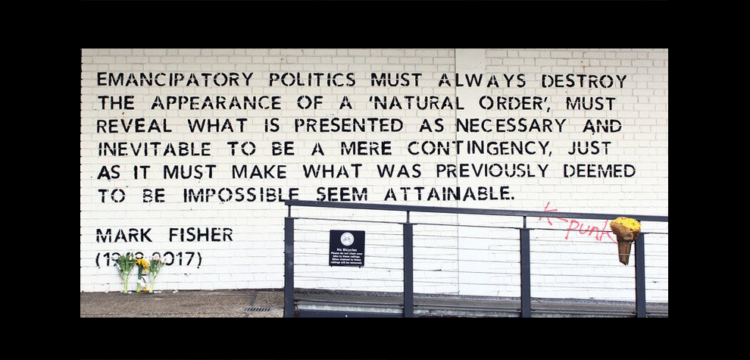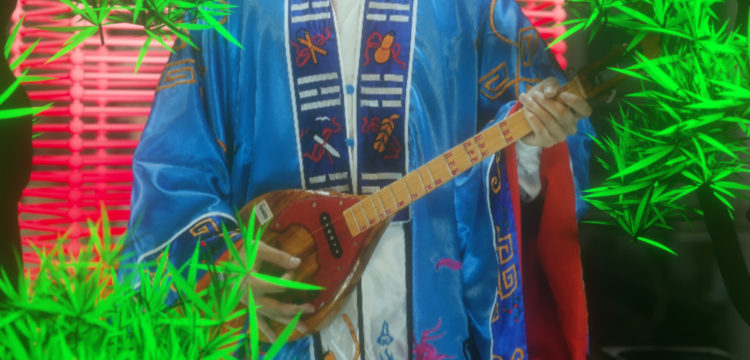Rattling Napkins
Tales and myths of disaster tourism and containment in the exclusion zone, and how Chernobyl took down the wall
For his latest composition HOBO UFO (Chernobyl), the artist and musician James Hoff spent weeks on the overgrown digital streets of Prypiat, a deserted city within the 30km “exclusion zone” that has globally become branded and currently being marketed as “Chernobyl.” In its live version, the sonified GPS frequencies and radio signals of HOBO UFO control a modified version of Google Street View, taking the listeners on a pretty hectic and rather paranoid tour through the radioactive area. After knowing his way around quite well in the apparently unpopulated area, Hoff invited his friend, writer and media theorist Marian Kaiser, a devoted player of S.T.A.L.K.E.R., a classic post-apocalyptic first person shooter that is set in the “Chernobyl exclusion zone” for a field trip to Prypiat. But rather than Google Street View’s deserted landscapes or S.T.A.L.K.E.R.’s ghouls and zombies, they discovered tourist bus groups and gift shops, ate pre-ordered vegetarian food in the Chernobyl cantina, they had photo ops with an elk and were invited for a group shot in front of the grey sarcophagus covering Reactor 4’s radiating remains. The exact sine wave sounds emanating from the beeping digital radiometers around the necks of the other—mainly Western European tourists over the course of six hours, filled the scenery with complex modulations, varying according to the relative grouping and the respective proximity of the tourists to one another. A couple of weeks later, Hoff and Kaiser met again online and played S.T.A.L.K.E.R. to revisit their day out in the yellow-leaved autumn birch forests of the exclusion zone, contemplating ambient capitalism.
James Hoff and Marian Kaiser previously met in a white cottage at the edge of “Vigeland Park” in Oslo, in January 2016 to discuss sounds, images, language and the events that produce them. Their conversation is part of the series “ ” curated by Adam Gibbons and Eva Wilson (NERO, 2018).
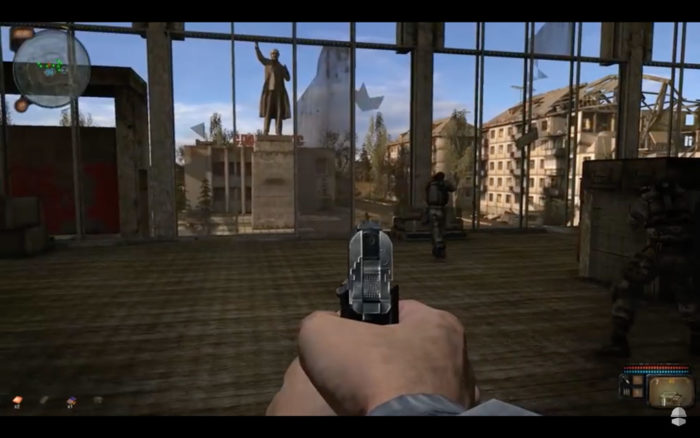
James Hoff: The words “ambient capitalism” keep coming to mind when thinking about our trip. Perhaps that’s redundant?
Marian Kaiser: Haha! Ambient capitalism and the ghost of Rick Moranis! S.T.A.L.K.E.R., part V.
JH: What I mean is capitalism sort of functions like an atmosphere. Branching out, moving into unexpected corners. I am thinking about it more like a sound, or a constant measure.
MK: I hear you on the Ambient Capitalism front, especially so when thinking of Pripyat. You travel somewhere to visit events and objects you cannot really see: invisible particles, departed workers, a catastrophe that has already happened.
JH: Yeah, the reactor itself is not a visible ruin, what you see is the brand new sarcophagus that contains the remains of a past event…
MK: …a black box, well silver box, a pyramid, a mythical place, incarcerating the old gods, reminder of a fallen USSR empire, now a tourist attraction, built and constantly rebuilt for the next thousand years, before radiation wears off. You’re in the aftermath.
The map is not the territory
—Habdank Skarbek Korzybski
JH: Always! It was a strangely anticlimactic experience. The catastrophe has always already happened and it has found its way to the market; its own catastrophe made desirable, nice, touristy, safe. I was also thinking about the landscape and buildings in Pripyat and how they were stripped bare after the collapse of the Soviet Union. People, looking for precious metals and valuables to resell, broke windows and left the buildings exposed; inviting a preternatural crumbling by way of mother nature.
MK: Also the story has its villains—the people who broke through the zone to strip it off its valuables apparently contaminated the world by selling them…
JH: Exactly, and of course all the stories and myths that get recycled, like the Soviets selling their old equipment to China, and you could never go to a flea market in Eastern Europe in the 90s and buy metal without it being tested with a Geiger counter.
MK: The uncontrollable circulation of particles and commodities… In the deep West of Germany, another major fear was radioactive rain poisoning the food, especially mushrooms. We didn’t eat any for about two years.
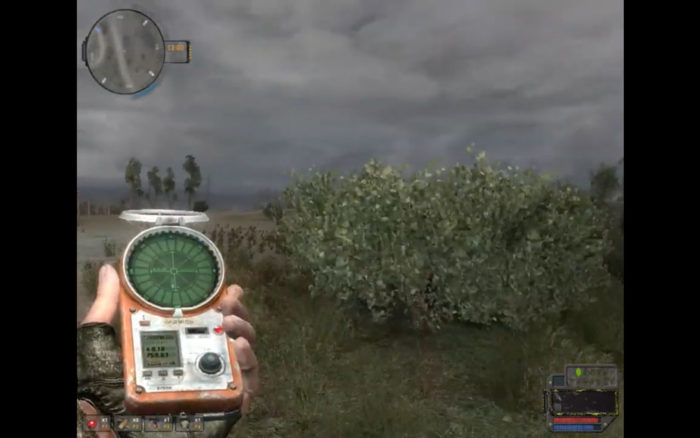
JH: And of course the stories by westerners, and where they were and how they reacted… Chernobyl (the site) has in a way become a bookmark for a fiction that probably never truly existed—creative non fiction perhaps—at least in terms of the narrative that we got when we visited. Remember the documentary on the tour bus? According to the film, there was a huge loss of trust in Soviet politics in Chernobyl’s aftermath. I wanted ask you about something you mentioned on the bus: you said the Germans had Chernobyl to thank for reunification. It’s not something I had considered heard before. Can you explain?
MK: Chernobyl implied an opening of the Soviet institutions toward the West. The radiation couldn’t be contained by state borders and institutions. The USSR had to release tons of information about its nuclear programme, secret military and sites, when cooperating with Hans Blix and the Atomic Atomic Energy Agency. I remember Gorbachev in the documentary, he said—this was the moment, he finally understood, that international cooperation was inevitable to contain the catastrophe. That’s what I was relating to. Without Gorbachev’s Glasnost and Perestroika politics, there wouldn’t have been the political possibility in the late 80s for this dramatic change to happen. I think that Chernobyl was both a rupture and an opening, politically speaking.
I mean, the Scorpions didn’t take that wall down. And surely not Reagan.
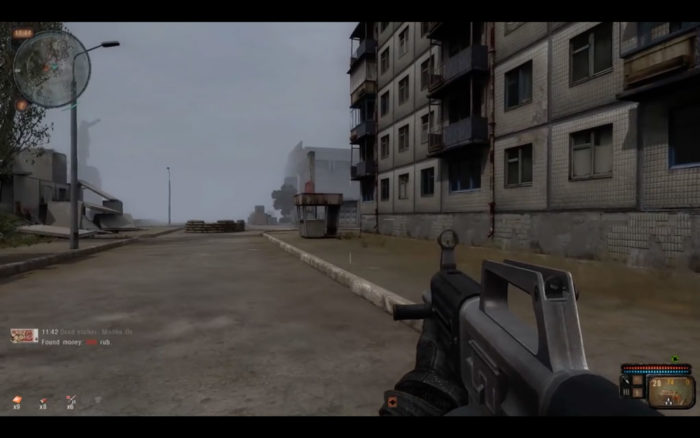
JH: Well, I guess the radiation was carried via winds to the West, so perhaps the Scorpion’s “Winds of Change” is more accurate than you think. I always confuse Hanx Blix with Blixa from Einstuerzende Neubauten… I like the idea of a collaboration between EN and the USSR. I’m plagued by misassociations, it’s a bad habit…
MK: I remember Blixa Bargeld in an interview, talking about what a “Neubau” is—basically every building erected after 1945. And the notion of the “collapse” (einstürzen) of those “new buildings” (Neubauten) gave the band its title. Blix and Blixa actually both worked during the crumbling of a post-war order. It makes complete sense—well, kind of…
But I guess, it is true that the catastrophe of Chernobyl is linked to the catastrophe of a borderless, worldwide capitalism. That’s what is so spooky about visiting Chernobyl now; it has become a theme park on the ruins of a former communist catastrophe. There is this Baudrillard quote (I know, old shit, but some of it still works) that Disneyland exists to make us believe that the world outside Disneyland is real? I had to think of that when standing next to the kiosk with the mugs and t-shirts in the exclusion zone. Radiation officially exists “in” the exclusion zone. And harmful radiation “under” the sarcophagus. Not outside of it. Somehow the term “inclusion zone” strikes me as a functioning metaphor for both the history and the present of the whole place. Today, Chernobyl is a container for an event that was catastrophic, but is now shielded off from present reality: the sarcophagus, the story about how the workers gave their lives to contain a much greater catastrophe, the exclusion zone that determines the radius of contamination (30km), the soil in which the radioactive debris is buried, and that is why the visiting tourists shouldn’t dig holes or wear sandals… It all follows the same narrative of containment. And the tourism industry sprouts outside this “sphere.” The villagers came back and grow veg and flowers again. You can safely look into what has been contained under a sarcophagus (space container), and you can safely look back onto what happened (history/time container). The rest is marketing.
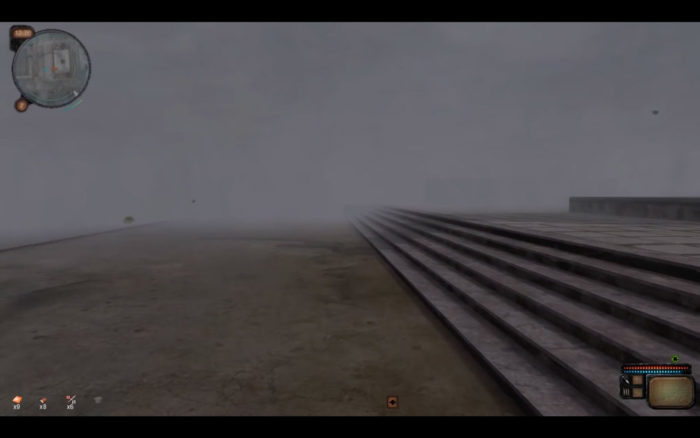
JH: On the one hand, yes, but actually visiting sort of meted that out for me. I left with a sense of awe for the people who survived, respect for Pripyat’s original Utopian vision and mandate, and a sort of sadness for life in general. It was the same kind of sadness I get from reading the New Yorker or going to Best Buy… the lingering malaise of an anodyne solution. This is not to say that any of it felt real; it didn’t. It felt like an abstraction, a mood.
MK: There is hardly a sadder and more desperate image than 66.000 people washing off a landscape and a city, trees and houses with cloths and detergent, one by one, to fight the spreading radiation—which is apparently what actually happened. But maybe, there is more to it. Maybe this feeling goes into the same direction as what I meant by “the catastrophe has already happened.” I have heard that sentence quoted by various people from different political spectres in different discussions during the past year.
JH: There seems to be a ubiquitous feeling that there is no turning back to a state of the world that is somehow more “natural”. In a way, I think that is good, because the idea of an untouched or idealized nature state has never really existed, although it has come in handy for political or religious discourse used to validate control mechanisms. It’s a collective daydream.
MK: What’s left is containment and management. We manage what is and what will not go away. The discourse around the so-called Anthropocene and current “ecological” theories seem to be permeated by this melancholic feel. There is no outside and there is no way back, nor out.
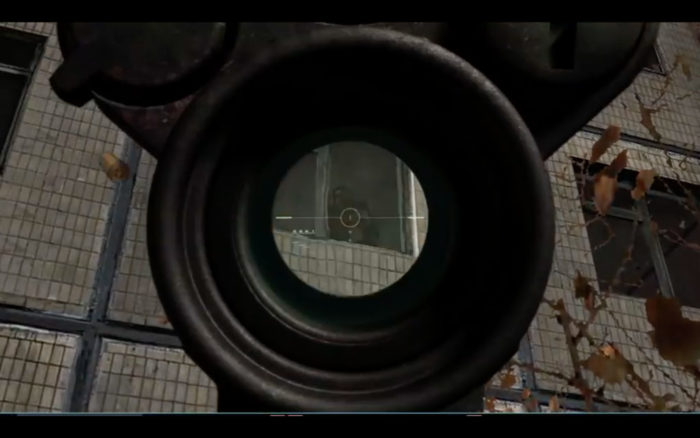
JH: It’s also interesting to note that the movie Stalker is based on the novel Roadside Picnic, which was conceived on the same month and year that Pripyat was founded as a utopian, social experiment, in February 1970. It’s hard to imagine though that the novel could exist before 1986; it so aptly captures the zone of exclusion and all of us outside looking in.
MK: Yes. We even saw one of the S.T.A.L.K.E.R. groupies, remember? The video game. It’s crazy. There is this fictional post-apocalyptic zone—invented in the same year as the city of Pripyat—that is famously turned into the film Stalker by Tarkowsky. Sixteen years later, the real Pripyat is destroyed by a nuclear explosion. And again twenty years later, a video game is released based on the book (and the film), taking Pripyat’s “exclusion zone” as its base map. And then, you meet the guys that play the game on a little live-role play adventure in the ruins of Pripyat.
JH: Yes of course, the stalker looked well-prepared for the elements and in a hurry. I am still not sure, he was not planted for us. It’s interesting to think about the post-apocalyptic as a fictional platform. Popular culture has given us a ready supply of what the end times will look and sound like… there is probably a perfume for it too. I guess it was Frederic Jameson that said “the end of the world is easier to imagine than the end of capitalism.” Odd that I didn’t hear any foley wooshes or crackly ambience, just silence, light wind, and lots of geiger counters going off… it actually sounded like a cracked Steve Reich work.
MK: When I listen to your latest composition, it feels a lot like walking through a landscape that is constantly changing, no cuts, rhythmic repetitions and alterations, as in your older works.
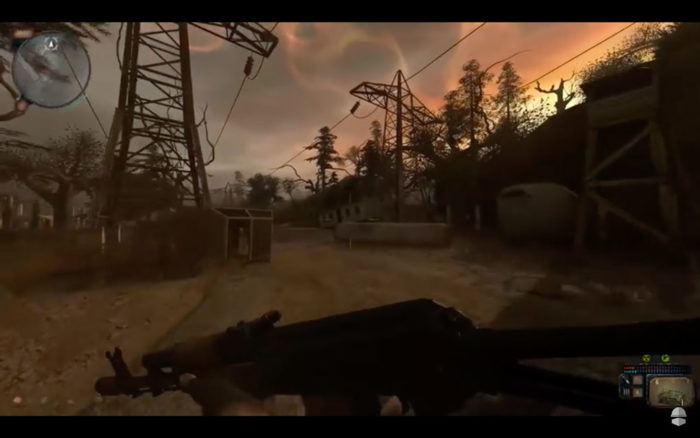
JH: Yeah, I always avoided these sort of smooth long transitions, opting instead for a more bipolar style that jump cuts through different sections. I never wanted the listener to be too comfortable and always favored work that undermined expectation from sequence to sequence. However, after being in Chernobyl this approach didn’t make sense and although I had already written 60 plus minutes of music, I abandoned it. It didn’t make sense any more. I wanted to create a work that responded to our physical presence in the environment. I was also interested in how the melody and instrumentation could function as an avatar for not only our experience inside this landscape but also Pripyat’s formerly-grand boulevards and their sad dissolution… The result is like a melody walking through a melting landscape. Sort of carefree/sort of melancholic.
MK: I like the notion of a field trip, the sound evokes. We are constantly inside and outside fields; Radio signals, GPS signals, WI-Fi signals. I guess, It is actually easier to sonify than to visualize them, due to the fact that they are so unstable, dynamic, formless, i.e. their form is ever-changing. In the 20th century, most information was sent through cables. Now, in the 21st century, electromagnetic fields are becoming ubiquitous. This is especially obvious in those places where the old power systems and cables through which signals and electricity were sent, were never fully in place, like here in Kinshasa. There has never been an extensive system of copper cables and landlines. Now, there are mobile devices everywhere. This is also how Bolsonaro could find his Brazilian voters in the Favelas, where there are usually no landlines or newspapers.
JH: I still have an ear worm of those modulating sines waves emanating from the radiometers.
MK: Yep. A beautiful soundtrack to our walk through the autumn trees. The area looks a lot prettier than S.T.A.L.K.E.R. or Google would make you believe.
An eye-opening experience
—Marilyn, Ohio, US on the website of Chernobyltour.com
JH: It is supposedly the largest Ukrainian national park. I mean, they have moose again.
MK: Haha! Yes, I remember, how the bus stopped and everybody stormed out to take a picture of that elk! Not too long after we were supposed to have that group photo with the rest of the bus tour.
JH: Yeah the guide called us spies for refusing. “Now we know who the spies are…”
MK: The rest of the group was far more suspicious. The French family, the German physicist and his wife, the Australian surfer dude backpacking Eastern Europe… all brought together into one composition via their geiger counters and their constantly changing interplay, modulating according to the grouping of the tourists in relation to each other.
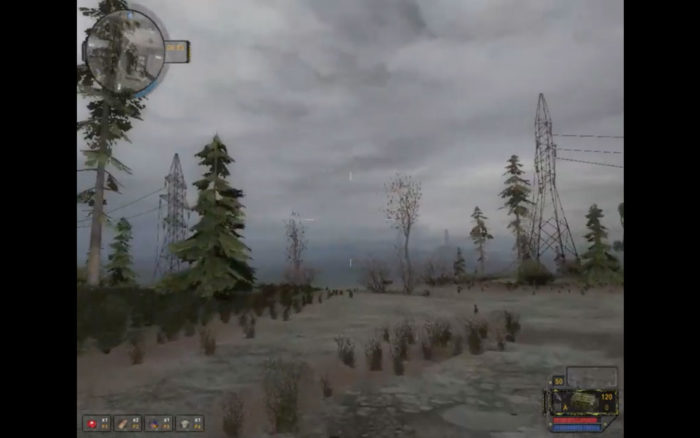
JH: Speaking of pings and sine waves, it’s worth noting that perhaps one of the highlights was not the disaster porn but rather the doppler radar system/structure known as the “Woodpecker.” It was like a woodstock speaker scaffolding that just kept going up—some 150 meters. The fact that it—and the surrounding village—was a secret before the accident is astounding. What was known (and what gave it its name) was the short wave radio sound it generated, audible on radio frequencies all over the world, a strange knocking, repeated in a 10 Hertz frequency, disturbing communication.
MK: Thousands of complaints to local authorities around the world, but the source could never be tracked… Woodpeckers from Mars… My favorite camouflage tactic was the colorful bus stop, all covered in children’s paintings, bears and flowers, that stood at the crossroad leading to the Woodpecker, pretending there was a children’s asylum in the woods, and not a 150m high-tech antenna to detect nuclear missiles.
JH: Yeah, I find it odd that a kindergarten bus stop could function as an effective cover. Also we shouldn’t forget about bio-bots.
MK: Yes. Bio-bots. The workers that had to clean the roof of the reactor from the debris. They had started using machines, but they couldn’t resist the radiation for long enough.
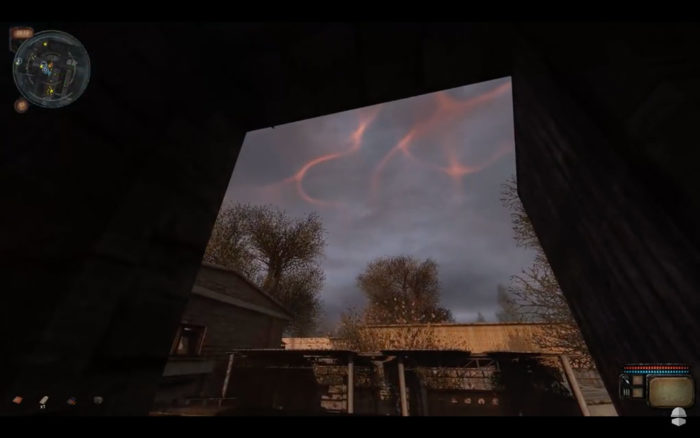
JH: The poor remote controlled robot sent by the Germans died in less than 5 minutes, I remember. They blamed the Russians for giving them wrong data about the actual radiation.
MK: Deploying machines for jobs that are too dangerous for humans, but then the machines fail and they send humans again, because they are more flexible, but then not calling them humans anymore, but “bio-bots”, that’s so freaky. From the perspective of the robot, a human being and a bio-bot are very different beings—even if they are the same person. Human work is taken over by robots and robot work by bio-bots.
JH: Half Blade Runner / half Karl Marx. It was weird to see them running in and out of the reactor shell…
MK:…grinning weirdly….
JH: …yellow radiometers around their necks…
MK: …in the rain…
[End]


